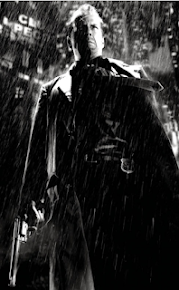Film & TV Language: Lighting
1) Still image analysis:
Look at the still images on slides 33-37 of the Film Language Power point linked above. Copy the images into your blog and answer the following questions for each image:
- Identify examples of high and low-key lighting.
- Say which depict top, back or under lighting.
- What effects are created by the lighting in each image?
1. Low key
2. Top, back, filler
3. With the lighting and the rain creating a shine off his body, creating the aesthetic of a thriller-esq look.
1. Low key
2. Top light
3. Creates a large darkness which gives an idea of mystery.
2. Top, back and filler
3. With the emphasis on his body due to the lighting, it depicts quite a menacing aesthetic.
1. Low key lighting
2. Top and Back lighting
3. Creates a contrasting light and dark look which is staple to the noir genre.

1. High key
2. back, top
3. The use of a shadow potentially looking over her creating a feeling of horror.
2) Film noir research:
Film noir is a term mainly used to describe mainly Hollywood crime dramas primarily set from the 1940-50s, which are typically regarded as classic. In shorter terms its a gritty black and white, high-key and low-key movie which can classify as noir as long as it fits those themes, no matter when it was produced, Although some people disagree as they think the phrase "noir" can only apply for the original classic films. Film noir can actually home all sorts of different plots and genres, but primarily are crime dramas, e.g. Psycho which is a horror.
3) Film noir YouTube clip analysis:
Throughout the entire film as a whole, There is a large contrast between high and low key lightings, particularly in the scenes where either Joseph Merrick is either being treated like a human or like an animal. High key when hes being given love to show that he is happy and has nothing to feel fear or hide, and low key where he is living in fear and lying in the shadows, those shadows representing his emotions and the current tone of the film.





Comments
Post a Comment